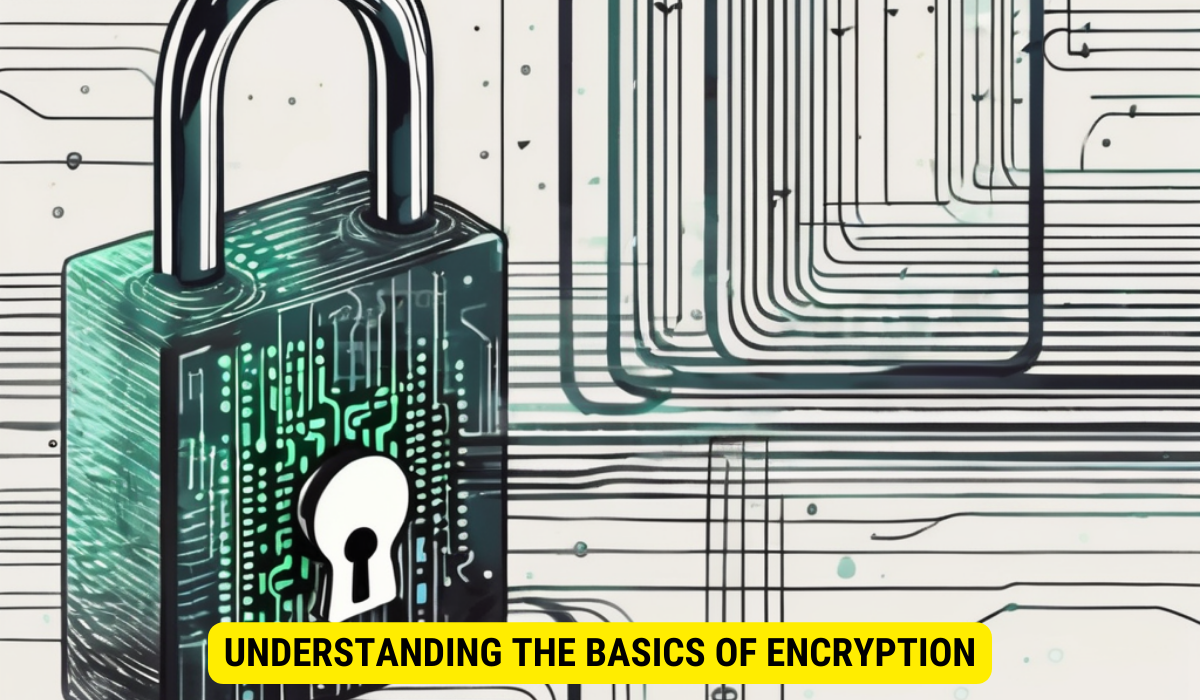Passwords serve as keys to unlock encrypted data, ensuring only authorized access. They act as gatekeepers, making encryption meaningful. Strong passwords bolster security against unauthorized entry.
In today’s digital age, where data breaches and cyber threats are all too common, protecting sensitive information has become more important than ever. Encryption is a powerful tool that helps keep our data secure, and passwords play a crucial role in safeguarding encrypted files. But how exactly does a password protect encrypted data? Let’s dive into the world of encryption and password security to find out.
Understanding the Basics of Encryption

Before we delve into the role of passwords, let’s first understand what encryption is. Encryption is the process of converting data into a format that is unreadable to unauthorized users. It involves using mathematical algorithms to scramble the data, making it meaningless until decrypted with the appropriate key.
Encryption is widely used to protect sensitive information such as financial transactions, private communications, and personal data. It acts as a shield, ensuring that even if someone gains unauthorized access to the encrypted data, it remains unreadable and therefore useless.
What is Encryption?
Encryption is a method of data protection that transforms readable data into a scrambled format using algorithms. This prevents unauthorized access and ensures confidentiality.
Encryption algorithms are designed to be extremely complex, making it virtually impossible for unauthorized individuals to decipher the encrypted data without the correct decryption key. The strength of an encryption algorithm lies in its ability to withstand attacks and maintain the confidentiality of the data.
The Role of Passwords in Encryption
Passwords play a vital role in the encryption process. They serve as the key that unlocks the encrypted data. Without the correct password, the encrypted file remains inaccessible and indecipherable. In essence, passwords act as the gatekeepers to our valuable information.
When you create a password, it is transformed into a unique string of characters called a hash. This hash is then used as a reference point to compare against the entered password. If the entered password matches the stored hash, access to the encrypted data is granted.
However, it’s important to choose strong passwords that are difficult to guess or crack. A weak password can render the encryption useless, as it can be easily breached through brute-force attacks or dictionary-based attacks. A strong password should be long, include a combination of uppercase and lowercase letters, numbers, and special characters.
In addition to strong passwords, it is also recommended to use two-factor authentication (2FA) for an added layer of security. 2FA requires users to provide two different forms of identification, such as a password and a unique code sent to their mobile device, before gaining access to encrypted data.
Furthermore, encryption is not limited to just passwords. Other forms of authentication, such as biometrics (e.g., fingerprints or facial recognition), can also be used to enhance the security of encrypted data. These additional layers of authentication make it even more challenging for unauthorized individuals to gain access to sensitive information.
The Science Behind Password-Protected Encryption
Now that we understand the role of passwords, let’s explore the science behind password-protected encryption.
During the encryption process, the original data is transformed using a mathematical algorithm, which generates a unique encrypted output. This output is often referred to as the ciphertext. To decrypt the data and convert it back to its original form, the recipient must possess the correct password.
But have you ever wondered how these mathematical algorithms actually work? Well, let’s take a closer look.
One commonly used encryption algorithm is the Advanced Encryption Standard (AES). AES operates on blocks of data, typically 128 bits in size. It uses a series of complex mathematical operations, including substitution, permutation, and mixing, to scramble the data in a way that is virtually impossible to reverse without the correct password.
Each round of the AES algorithm applies a different set of operations to the data, making it even more secure. The number of rounds depends on the key size, with AES supporting key sizes of 128, 192, and 256 bits.
The Encryption Process
When a password is entered, it is combined with the encryption algorithm to produce a hash, which is then compared to the stored hash. If the hashes match, the encryption is successfully decrypted, and the data becomes readable once again.
But how exactly does this hashing process work? Well, hashing is a one-way function that takes an input, such as a password, and produces a fixed-size string of characters, known as the hash value. This hash value is unique to the input, meaning that even a small change in the input will result in a completely different hash value.
Hash functions are designed to be fast and efficient, but also secure. They are designed in such a way that it is computationally infeasible to reverse-engineer the original input from the hash value. This adds an extra layer of security to the encryption process.
How Passwords Enhance Security
Passwords significantly enhance the security of encrypted files. They act as an additional layer of protection, ensuring that even if an unauthorized individual gains access to the encrypted data, they cannot decipher it without the password. This adds an element of confidentiality to the encryption process.
But what happens if someone tries to guess the password? Well, modern encryption systems have built-in mechanisms to protect against brute-force attacks, where an attacker systematically tries every possible password until the correct one is found.
One common technique used to protect against brute-force attacks is key stretching. Key stretching involves applying a slow and computationally expensive function to the password, making it much more time-consuming for an attacker to try multiple passwords. This effectively slows down the brute-force attack, making it less feasible.
Furthermore, passwords protect against unauthorized modification of encrypted files. Without the correct password, any attempt to modify the encrypted data will result in an incorrect hash, rendering the decryption process unsuccessful.
So, the next time you enter a password to decrypt an encrypted file, remember the intricate science behind it. From the complex algorithms to the one-way hashing functions, password-protected encryption is a fascinating blend of mathematics and computer science that ensures the security and confidentiality of your data.
Different Types of Encryption Algorithms
There are various encryption algorithms available, each with its own strengths and weaknesses. Let’s explore two common types of encryption algorithms: symmetric encryption and asymmetric encryption.
Symmetric Encryption
Symmetric encryption, also known as secret-key encryption, uses a single key for both encryption and decryption. The same key is used by both the sender and the recipient. While symmetric encryption is fast and efficient, it requires the secure exchange of the secret key between the parties involved.
Asymmetric Encryption
Asymmetric encryption, also known as public-key encryption, uses a pair of keys: a public key for encryption and a private key for decryption. The public key can be freely distributed, while the private key must be kept secret. Asymmetric encryption eliminates the need for a secure key exchange but is computationally more intensive than symmetric encryption.
The Strength of a Password
Now that we understand the importance of passwords, let’s explore factors that determine password strength and learn tips for creating strong passwords.
Factors that Determine Password Strength
Several factors contribute to the strength of a password:
- Password Length: Longer passwords are generally stronger than shorter ones.
- Password Complexity: Including a mix of uppercase and lowercase letters, numbers, and special characters increases complexity and makes the password harder to crack.
- Avoiding Common Passwords: Using common words or easily guessable patterns weakens the password.
Tips for Creating a Strong Password
Follow these tips to create strong passwords:
- Use a combination of uppercase and lowercase letters, numbers, and special characters.
- Avoid using personal information, such as names, birthdays, or addresses.
- Make your password unique for each online account.
- Consider using a password manager to securely store and generate complex passwords.
The Future of Passwords and Encryption

As technology continues to advance, the future of passwords and encryption is evolving. Let’s explore two emerging trends in the world of digital security.
Biometric Authentication
Biometric authentication, such as fingerprint or facial recognition, offers a way to replace or supplement traditional passwords. These methods use unique biological characteristics to verify a user’s identity, providing a more secure and convenient authentication process.
Quantum Cryptography
Quantum cryptography is a field that leverages the principles of quantum mechanics to develop new encryption methods. These methods are specifically designed to withstand attacks from quantum computers, which have the potential to break traditional encryption algorithms.
Key Takeaways:
- Encryption is the process of converting data into an unreadable format, and passwords serve as the key that unlocks the encrypted data.
- Strong and unique passwords significantly enhance the security of encrypted files, protecting against unauthorized access and modification.
- Symmetric encryption uses a single key for both encryption and decryption, while asymmetric encryption uses a pair of keys: a public key for encryption and a private key for decryption.
- Password strength is determined by factors such as length, complexity, and avoidance of common passwords.
- Emerging trends in digital security include biometric authentication and quantum cryptography.
FAQs:
Q: Can encrypted files be hacked?
A: Encrypted files are designed to be highly secure, but no security measure is 100% foolproof. It is important to use strong passwords and stay up to date with the latest encryption techniques to minimize the risk of hacking.
Q: Are all encryption algorithms equally secure?
A: Encryption algorithms vary in terms of their security and vulnerability. It is crucial to choose well-established and widely recognized encryption algorithms that have undergone rigorous testing and analysis.
Q: What is the difference between encryption and hashing?
A: Encryption and hashing are both cryptographic methods, but they serve different purposes. Encryption is reversible, meaning the encrypted data can be decrypted back to its original form. Hashing, on the other hand, is a one-way process that generates a fixed-length string of characters, called a hash, which is unique to the original data.
Q: Can I use the same password for multiple accounts?
A: It is not recommended to use the same password for multiple accounts. If one account is compromised, having unique passwords for each account minimizes the risk of unauthorized access to other accounts.
Q: Is it safe to store passwords in a browser?
A: Storing passwords in a browser can be convenient, but it is important to ensure that your device is secure and protected by a strong master password. Additionally, consider using a reputable password manager for added security.
Conclusion
In conclusion, passwords play a crucial role in safeguarding encrypted files. They act as the key that unlocks the encrypted data, ensuring that only authorized individuals can access and decipher the information. By understanding the basics of encryption, the science behind password-protected encryption, and the factors that determine password strength, we can better protect our valuable data in this digital era.
